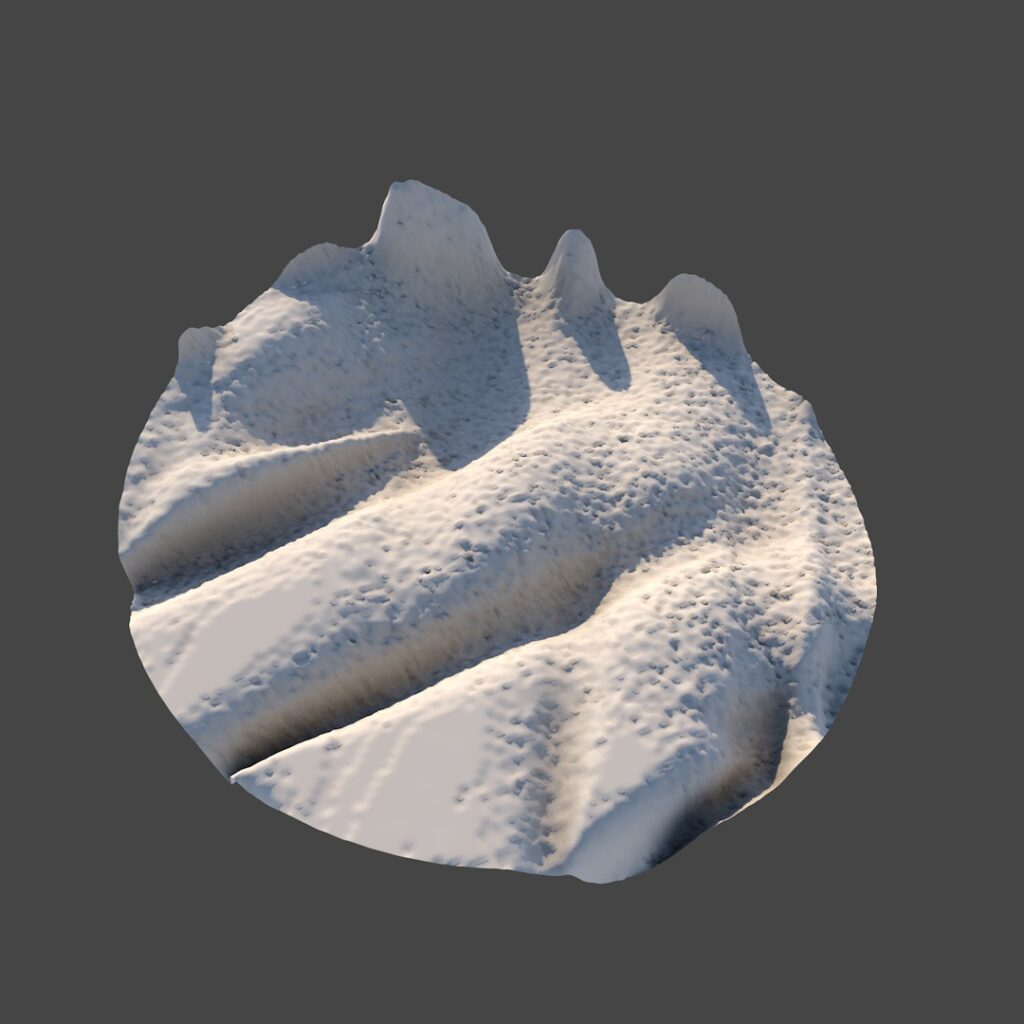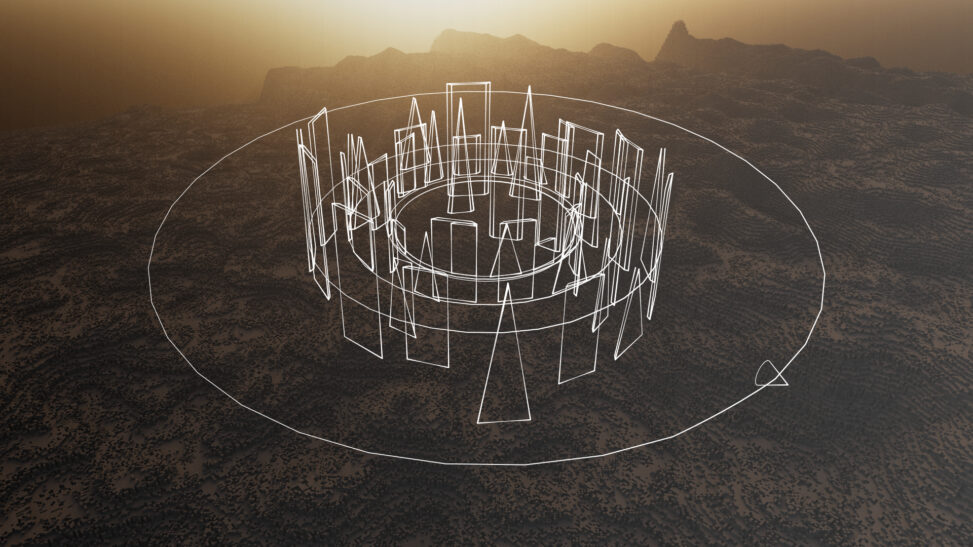Please note/disclaimer: This text is work in progress and might be updated semi-regularly. Its part of an experiment with the goal to make a creative process transparent. Since every creative workflow starts qua definitionem chaotic, unstructured and wild and takes shape over time this constitution is also reflected in this text.
The project I would like to introduce in the following aims to explore the mode of operation of imagination through a media-artistic interactive installation. It is an absolute work in progress, to “find questions to which the machine provides answers”. The project is a collaborative production by Prof. Michael Johansson (Sweden) and Andreas Siess (Germany).
Framework
The “machine”
In my dissertation, I delve deeply into the idea of the machine in German Romanticism, which is situated as a threshold phenomenon between proto-industrialization and the Baroque period. In the Baroque, an era of illusion (“epoch of theatre”), “automata” were constructed, specifically machines that attempted to mimic humans. Although these devices may seem trivial from today’s perspective, they set the stage for modeling humans themselves as machines (De LaMettrie (1748): L’homme machine). Consequently, machines acquired an aura of being “new” and “uncanny,” thus they were used as a conceptualization for phenomena that operate “automatically” and fluctuate between magic and means of deception. Many of the Baroque machines, upon closer inspection, turned out to be deceits – hence the image of the machine around 1800 harks back to the ancient understanding of a deceptive device (“deus ex machina”). This interpretation is further emphasized by the contemporary scientific discourse, which was partly driven by phantasmagoric stagings and spectacular experiments.
Why is this image of the machine relevant to our art project? A significant theme of Romanticism is its focus on imagination and fantasy (cf. Michel Foucault, Jean Paul, E.T.A. Hoffmann). In the spirit of the aesthetics of genius prevalent at the time, this phenomenon was given great attention (also as a counter-movement to the “cold” rationality of the Enlightenment). Since imagination was also conceived as an “automated,” opaque, and independently operating process, the machine became a conceptualization of imagination, always to be negotiated against the backdrop of the zeitgeist of the time, and the particular image of the machine.
The shadow image
The thinking of Romanticism operates, as Montandon and Kittler have noted, not through a singular connection between referent and reference. To invoke Saussure at this point: In romantic thought, the sign “tree” does not point to the ontological object “tree” but is always understood in its referential function. As I am currently elaborating in my dissertation, the poetics/aesthetics of Romanticism does use a mimetic descriptive technique, which at first glance appears naturalistic (= ontological trees are used). However, the signs always refer to a meaning that is not monocausal, but decidedly pluralistic in nature and only arises in the imagination of the recipients. The Romantics refer to this as an “arabesque”, which, like a fractal, branches and twirls infinitely. In romantic poetics, Saussure’s “tree” therefore does not point to a tree, but rather to a network of associations and concretizations that is newly constituted with every reading.
Hoffmann, as one of the most important representatives of German Romanticism, coined the term “shadow image” for this particular hermeneutic in his collected works “The Serapion Brothers”. The author/artist only sketches the rough outlines of a shadow image, while the color and vitality arise anew as a performative act during art reception. With the shadow image, there is also a wonderful conceptualization to visually illustrate the – admittedly – difficult to decipher relationship between reference and referent in Romanticism. As artists, we find this finding highly intriguing.
“Wandering” in the “landscape”
By the time of Caspar David Friedrich’s “Wanderer above the Sea of Fog”, the act of wandering in nature has been firmly anchored in cultural memory as an important romantic motif. Hiking is connected – difficult to understand from a modern perspective – with the machine. The act of “letting oneself drift”, the contemplative walk through nature as a source of inspiration, is also considered one of the “automated” activities that, from a romantic perspective, are related to the machine.
What exactly do we have in mind?
The “machine” of imagination is to be understood as a romantic allegory. However, we interpret this metaphorical image literally and construct an actual machine that implements the romantic idea of imagination as a technical artifact. In essence, we transform an epistem into a metaphysical object (a “thing” in the sense of Heidegger).
Important Machines & Concepts (“stepstones”)
- Zoetrope: In 1834, shortly after the Romantic period, William Horner developed the “Zoetrope” (also called “Daedalum”). This machine symbolically represents the attempt to create the illusion of movement from static images, or, to use romantic terminology – to generate “vivacity”.
- Shadow Play by Hans Peter Feldmann (Wikipedia has a photo – the exhibition took place around 2010, which seems to be reason enough for museums to remove the corresponding references, texts, and images from their websites.)
- Plato’s Allegory of the Cave.
- Mark Tansey: “Wheel”
Previous Path/Current Status
This project is one of the first in which we, as artists, have no deadline and no finished “product” in mind. Instead, quite romantically, we “drift”/”wander” and follow our inspiration rather than a concrete, rational goal. To conceptualize this working method, we have chosen the working title Wandering Landscape Machine. This working title not only categorizes our working method but also provides at least a rough direction in which we want to move. We build “landscapes” by letting our “machine wander”. If the term “landscapes” we mean topologies, formats, epistemes, or (romantic) allegories, we deliberately leave open.
Being socialized in postmodernity, this way of working, which doesn’t reliably lead to clearly measurable successes or goals, is not only quite unusual but also extremely exhausting. For this reason, we document our considerations and progress (more on this later) to at least ensure that we are not “wandering in circles.”
Configuration of the Machine
Horner’s Zoetrope, as the first machine implementation of “vivacity”, had a major influence on our initial prototype. As we primarily work online – initially due to the COVID pandemic and especially due to the distance between Sweden and Germany – most of the concepts are initially developed exclusively in digital form. A preliminary, sketch-like blueprint of our machine looks as follows:
To recap: The romantic model of imagination views the plurality of readings not as a disruptive factor, but as a constitutive feature. The shadow images are not just for free association, but their sole purpose is to be used as an affordance for imagination. (Incidentally, the Romantics here refer to an inspiration model attributed to Leonardo da Vinci.) Our first prototype works by light passing through various shadow casters, eventually projecting a shadow image onto a tableau in the center. This image is deliberately arbitrary, symbolizing the interplay between the metaphysical world (light, shadow casters) and a mnemonic technique that operates through symbolization and abstraction (shadow image). Only imagination, through contemplative observation, transforms the shadow image into a singular concretization.

Example of a shadow image porduced by the “machine”.
To transform these shadow images into a topology, we use an established technique from 3D computer graphics: Displacement.
Displacement can be explained quite quickly: The individual points of a 3D polygon mesh are shifted along the height axis. This operation is performed using the grayscale values of a pixel image. The “darker” an area of the image, the more the corresponding point is shifted on the height axis. Since displacement explicitly requires grayscale images (and ignores all other color information within the image), our shadow images are naturally suited to be used as displacement textures.
If this procedure is applied to the shadow images that the machine produced we can create small topologies:

These topologies can be enriched/altered/distorted by combining multiple different shadow images by multiplication, addition etc.:

Also we can use the shadow images not only for producing the topology but also as a “map” for steering vegetation, texture, fog, atmosphere etc. on these small landscapes:

Further Development of the Machine
Our first prototype deliberately used very primitive forms of shadow projectors. Despite this admittedly simple construction, very interesting topologies and shadow images emerged, which no longer point back to the original configuration of the machine but instead represent a new concretization of an original scene – a deeply “romantic” mode of imagination.
The simple form of the shadow projectors also has production aesthetic reasons: To get a sense of the possibilities and peculiarities of our machine as artists, a “playful” approach is necessary. The simpler the rules of the game, the more accessible it is (Caillois). Nevertheless, in our concept, the shadow projectors are supposed to represent a mimetic original scene – hence we must ultimately deal with their form.
As the next development step, we will replace the geometric primitives with “mannerist-mimetic” signs, which inherently point to their original meaning but receive a new contextualization through their use in the machine.

Comments are closed.